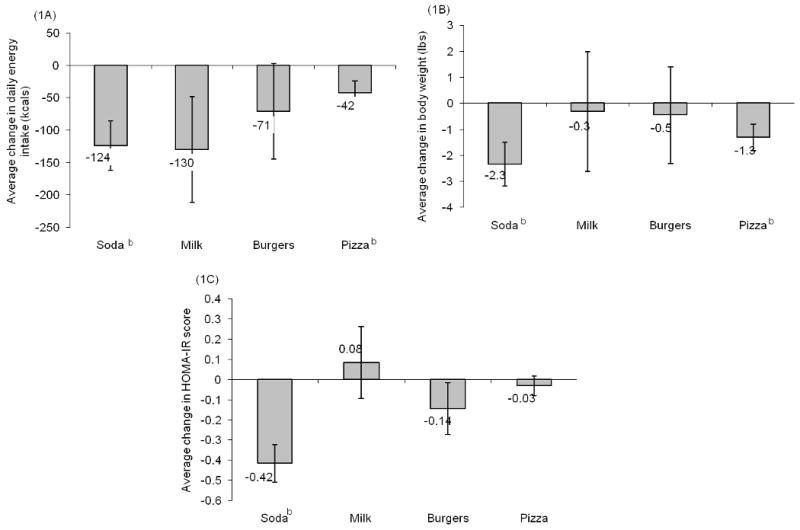Figure 1.

Association between a one dollar increase in the price of selected foods and beverages with change in total energy intake (A), body weight (B), and HOMA-IR (C) a
a Each food/beverage and outcome variable were modeled independently (n=12 models) as linear regression models of outcome (total energy intake (kcal, n observations = 12,007), weight (lbs, n observations = 11,972), and HOMA-IR (n observations = 10,218)) on the price (in dollars) of soda, whole milk, hamburgers, and pizza. All models adjusted for the following covariates: age (continuous), race, gender, income (low (<$25,000), middle ($25,000-<$50,000), high (≥$50,000) [referent], missing income), education (< high school (HS), completed HS [referent], 3 years college, ≥ 4 years college), family structure (single, married [referent], single with children, married with children), logged cost of living, imputed price (indicator variable, yes/no), and CARDIA study center. Models with weight as the dependent variable also adjusted for participants' height. Models adjust for clustering at the individual level.
Specific food and beverage models also adjust for the following covariates: Soda, logged price of wine; Whole milk, logged price of coffee; Burger, logged price of fried chicken, steak, and parmesan cheese; Pizza,logged price of fried chicken.
b Estimate is significantly different from zero, p<0.05.
